The Role of Flower Superstitions in History, Literature and Art
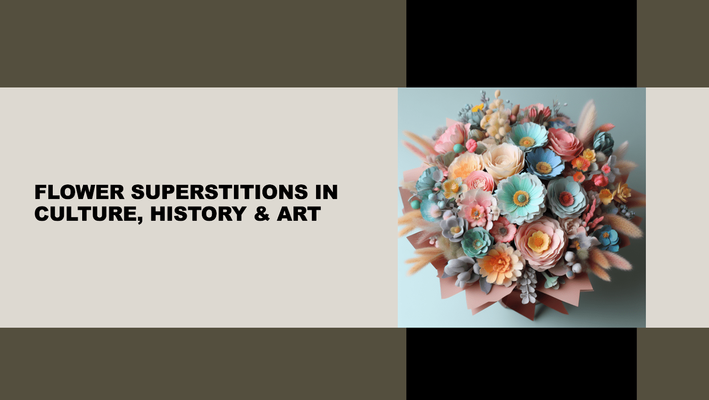
Flowers have captivated humanity across cultures and eras with their fleeting beauty and fragrance, seen as both symbols of life's impermanence and harbingers of the changing seasons. But beyond aesthetics, blossoms have long carried symbolic meaning and been imbued with beliefs ranging from the language of flowers to superstitions about luck, death, and witchcraft.
This article explores the extensive history and folklore underlying the rich symbolism of flowers in global literature and art. We survey how specific blooms came to represent human ideas and emotions, and why so many rituals and traditions related to stages of life developed around these botanicals across such diverse cultures.
Topics span:
- Ancient Egyptian and Greek flower mythology
- Intricate Victorian floral dictionaries
- Theatre superstitions about bouquets and live plants
- Use of floral motifs in Shakespeare, Monet, and fabrics
- Feng shui principles assigning prosperity meaning to orchids
By understanding the long-standing beliefs and practices associated with the floral world, we gain insight into the very values, fears, and aspirations that define humanity across history. Even as flower symbolism continues to evolve in our emoji-driven digital era, it retains its uncanny power to express that which words alone cannot.
History of Flower Symbolism
The practice of assigning symbolic meaning to flowers likely began many millennia ago. Prehistoric graves filled with floral tributes hint that archaic cultures believed blossoms ushered the soul into an afterlife. Ancient texts like the Bible, Mahabharata, and Homer's works mention flowers like the rose and lily in metaphorical contexts, alluding to deeper connotations.
But the formal study of the symbolic and spiritual properties of flora blossomed in the ancient Western world.
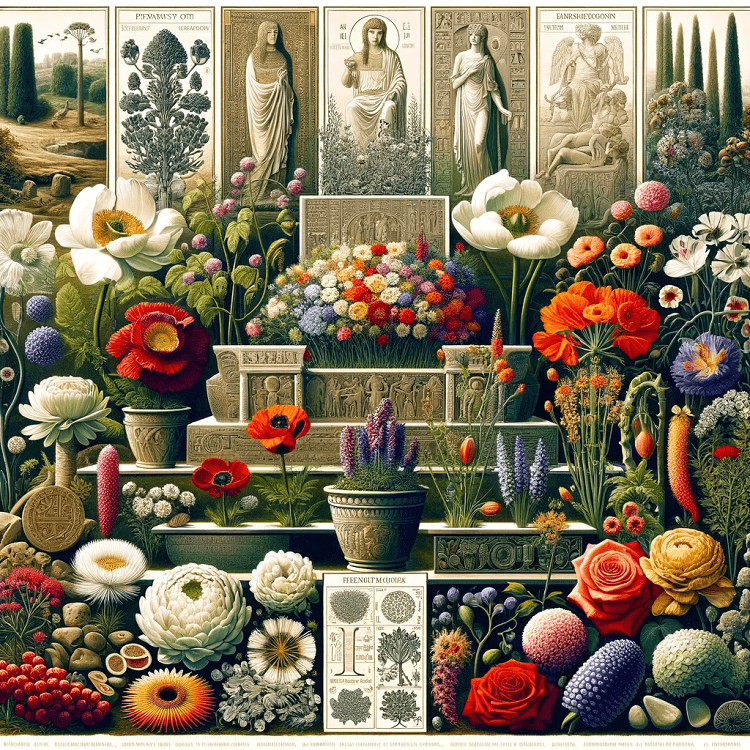
Symbolic Flowers in Ancient Egypt and Greece
Ancient Egyptian culture, art, and mythology brimmed with lotus flower iconography representing renewal and rebirth since at least 2500 BCE. Greeks later associated plants with specific gods and goddesses - grain and poppies for fertility deity Demeter, myrtle and quince trees sacred to love goddess Aphrodite.
In the courts of Grecian kings, floral wreaths denoted power and status. When Roman Empire expansion spread Greco-Roman culture across Europe and the Mideast, their flower folklore disseminated too.
Spread of Flower Symbolism to Medieval Europe
The medieval period saw Christianity adopt and spread vegetative motifs. The white lily became a Marian symbol of purity, the passionflower represented Christ's crucifixion, carnations and roses emerged in Renaissance art as sacred love emblems.
By the late Middle Ages, flowers personified human virtues and emotions in secular literature as well. English poets like Chaucer used symbolic flora, as did Persian Sufi writers, many borrowing from ancient texts.
Intricate Meanings in Victorian Floral Dictionaries
But the current breadth of associations between flowers and abstract concepts owes much to the 19th century Victorian era. A period fascination with plant taxonomy and sentimentality led to entire floral dictionaries aimed at codifying the language of flowers.
Gifts of herbarium bouquets and corsages became a nuanced courtship gesture suitors used to signal interests, with floral arrangements carrying secret romantic messages. Beyond love, Victorians crafted complex meaning for diverse flowers tied to values like devotion, friendship, luck, grief, and more. This linguistic phenomenon endures in baby names like Daisy and Lily today.
Common Flower Superstitions and Folklore
Beyond symbolic dictionaries, folk beliefs and superstitions related to blossoms also abound across cultures. Specific numbers, colors, and types of flowers have long been tied to life events like weddings, funerals, and closing deals.
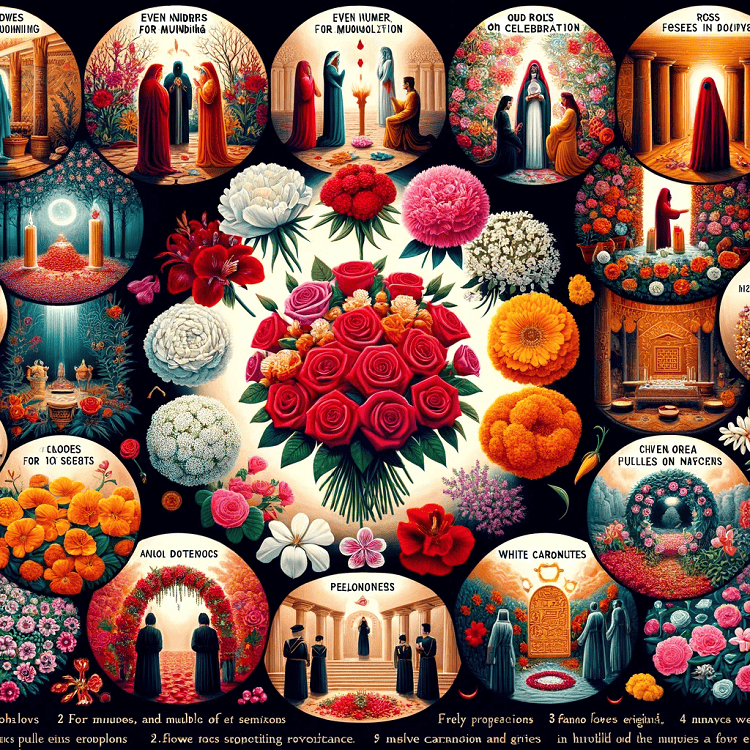
Floral Numerology
Flower numerical superstitions likely began with ancient Egyptian and Chinese traditions assigning sacred properties to certain numbers. This numerology persists today in rules of floral etiquette:
- Even numbers of stems signify mourning and death in many cultures, while odd numbers denote celebration and luck
- A dozen red roses declares classic romance, but 13 promises greater fortune
- Buddhists give 99 stalks to honor the dead during Ghost Festival
- Egyptians buried nobility with floral garlands in multiples of 7
Warding Evil, Witchcraft, and Curses
Various blossoms have long been believed to deter or undo black magic and curses across spiritual traditions. For example:
- Europeans planted marigolds to repel witchcraft
- Ancient Greeks wore anemones to protect against illness
- In Hoodoo, laying white carnations in doorways stops hexes
- Hindus string mango leaves on entrances to block evil
- Chinese have burned chrysanthemum incense to exorcise demons for centuries
Floral Beliefs Around Relationships
Symbolism intersects with superstition especially strongly around affairs of the heart. Customs include:
- A red and white rose bouquet together means unity in England
- In Russia, even numbers of yellow roses predict failed romance
- A peony on date night promises marriage in Chinese tradition
- Catching a bouquet toss, but not wearing it, prevents bad luck in the U.S.
- Ancient Greeks wore ivy wreaths to weddings for fidelity
Flowers in Theatre Traditions
Beyond literature and visual arts, flower folklore permeates performative arts too. As theatre developed from ancient Greek and Roman religious rites into a professional entertainment industry during the Renaissance, oral traditions around prop plants took root backstage.
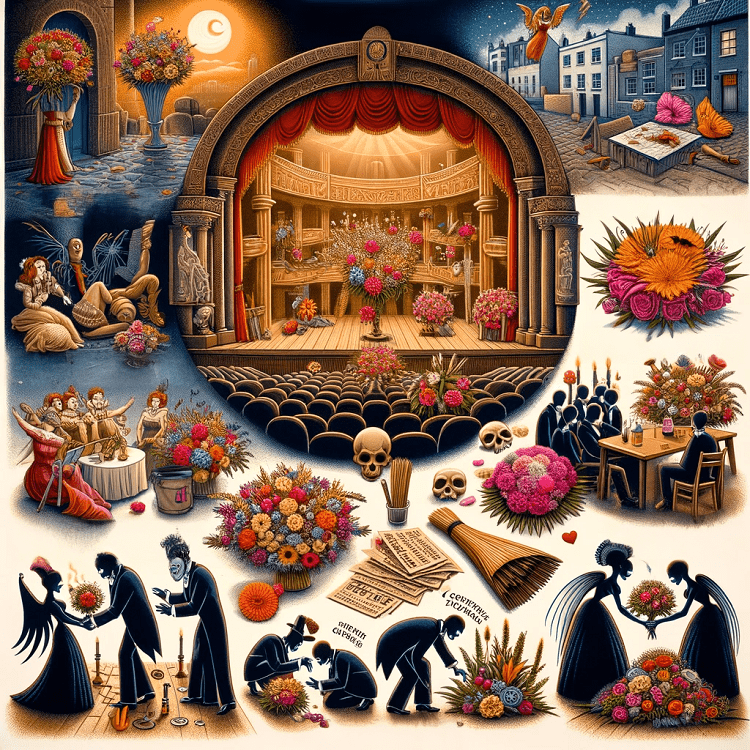
No Real Flowers Allowed On Stage
A long-standing superstition maintains that real floral arrangements should never appear in live theatre productions, only artificial representations. Possible origins include:
- Real petals shed mid-show cause slippery falls
- Live plants invite insects backstage
- Natural blooms wilt under hot stage lights
The "no flowers" rule persists today, with some thespians believing bouquets carry bad luck for the whole cast. Exceptions occasionally occur, but live flowers remain rare in modern theatre.
Closing Night Cemetery Flowers
However, a countervailing tradition of gifting performers bouquets picked from cemeteries took hold during the Victorian era. Dubbed "graveyard flowers," these closing night tributes wished the show an auspicious transition into the next realm as the production ended.
The gothic-tinged custom continues today on Broadway and in some drama schools, despite initial macabre impressions. Recipients view the closing floral gifts as meaningful good luck emblems.
No Pre-Show Bouquets
While closing night cemetery flowers represent blessing, gifts of flowers before curtains open supposedly curse a production.
- Ancient Greek actors forbid patrons giving pre-show blooms
- Early English theatre companies banned floral tributes backstage
- Modern performers refuse showtime posies as bad omens
Theatre lore warns that donning corsages or holding bouquets prior to curtains opening dooms a show to poor reviews and fast closure. Instead, floral appreciation comes once the performance concludes.
Flower Symbolism in Literature
Garden imagery and floral metaphors have grown common in global literature over centuries, the symbolic meanings varying by culture and era. While ancient myths linked blossoms to underworld gods, by the Middle Ages flowers personified courtly virtues and emotions in poetic verse.
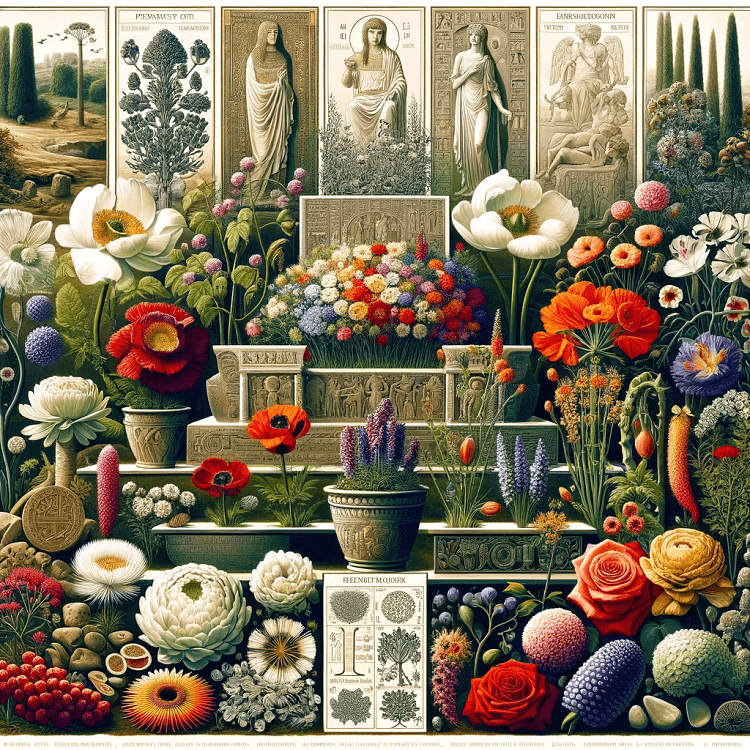
Flower References in Shakespeare and Other Renaissance Writers
Few writers intertwined flowers and romance as prolifically as William Shakespeare. His frequent allusions to roses symbolized love, while unhappy relationships met with carnations, daisies, violets and other fragrant blooms. Scholars believe he referenced over 200 flowers.
Contemporary English playwright Ben Jonson also seeded florid symbolism into his works, as did Spanish scribe Cervantes in Don Quixote. The Renaissance brimmed with poetic phrases like “pluck the pale primrose” evoking youth, beauty and carpe diem ideals in floral idioms.
Personality and Motif Flowers in The Great Gatsby
By the 20th century, specific flowers defined key personalities in seminal novels. In F. Scott Fitzgerald's The Great Gatsby, eponymous antihero Jay Gatsby showers love interest Daisy Buchanan with extravagant orchid and rose bouquets. Meanwhile, naïve Daisy herself becomes associated with delicate white daisies through the text.
Fitzgerald’s lyrical yet spare prose style echoed Impressionist floral portraits. Other modernist authors like Virginia Woolf and Toni Morrison also employed flowers as emotional motifs versus mere ornaments.
Poppies as Symbols of Loss and Impermanence
Not all literary blossoms convey romance. Opium poppies appear in both L. Frank Baum’s The Wonderful Wizard of Oz and wartime poetry, nodding to fantasy escape and somber impermanence respectively.
While Dorothy lands in a vibrant poppy field rendering her unconscious, World War I soldiers penned verses linking Flanders poppies to the countless graves of fallen comrades – symbols of sleep, loss and the fragility of life.
These more solemn associations persist in modern pop culture, with heroin addictions and impermanent memory loss aligning with poppy symbolism historically tied to Morpheus and death.
Flowers in Art History
Floral motifs have decorated the walls of ancient Egyptian tombs, patterned Minoan pottery, and accentuated Renaissance sculpture. Over centuries, blossoms emerged not just as artistic elements but as symbols conveying meaning about life, death, and faith itself within visual culture.
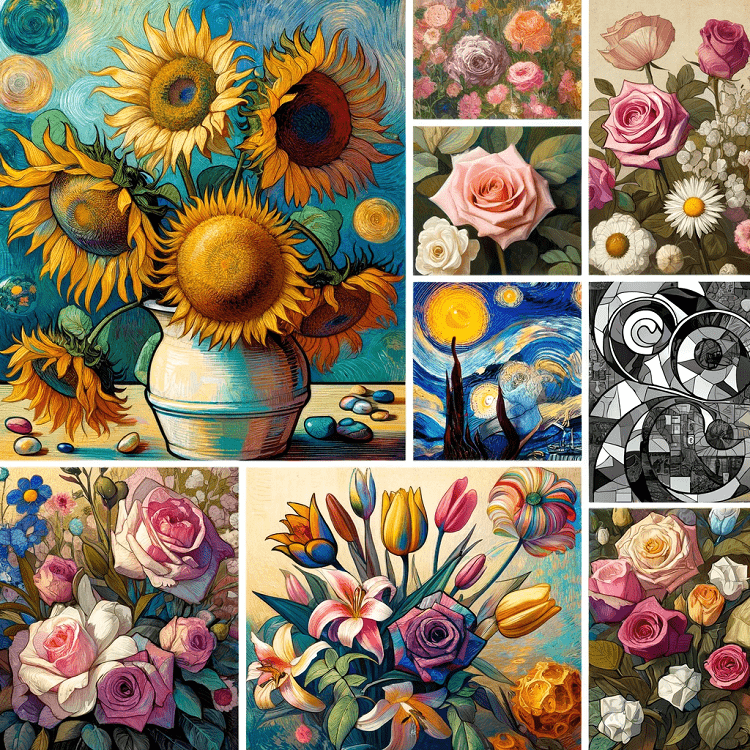
Still Life Painting and the Vanitas Tradition
By the 16th century, Europe’s newfound fascination with scientific observation led artists to capture floral ephemerality through detailed still life studies. Bouquets typically included roses, tulips, and sunflowers over the next two centuries. These paintings fall into the “Vanitas” tradition, using decay symbolism to remind viewers of mortality.
Dutch Golden Age master Jan Brueghel the Elder frequently combined flowers like carnations, hyacinths, and poppies with skulls, rotten fruit, and broken glass in lush canvases. His floral life and death contrasts influenced a generation of Baroque artists intent on memento mori messaging.
Impressionists Find Inspiration in Gardens
Claude Monet raised ire by painting common wildflowers when the Impressionist movement dawned in 1860s France. But his lush garden landscapes soon redefined floral aesthetics with loose, vivid style.
Fellow Impressionists like Renoir and Cassatt also favored gardens overflowing with roses, irises, lilies, and wisteria. Soft brush strokes evoked not just natural beauty but the emotional state of the artist. Critics came to view the Impressionists’ floral infatuations as psychological self-portraits.
Fabric Design Ushers Floral Motifs into Decor
By the mid 19th century, designers like William Morris pioneered floral patterned wallpapers and textiles that soon adorned middle class homes. Morris’ brand Morris & Co. endures today producing arts and crafts era patterns many find just as appealing in contemporary decors.
But the roots of floral decor trace much further back. Documented in early Renaissance painting, 16th century Italian aristocrats wore rich brocade gowns featuring metallic silver and gold embroidery depicting botanicals like acanthus leaves, pomegranates, and wheat.
Modern Adaptations of Classic Flower Lore
Contemporary culture continues to integrate symbolic flora into legends, lyrics, and iconography even as societies grow increasingly secular and urbanized. Digital formats spread traditional flower meanings to new audiences.
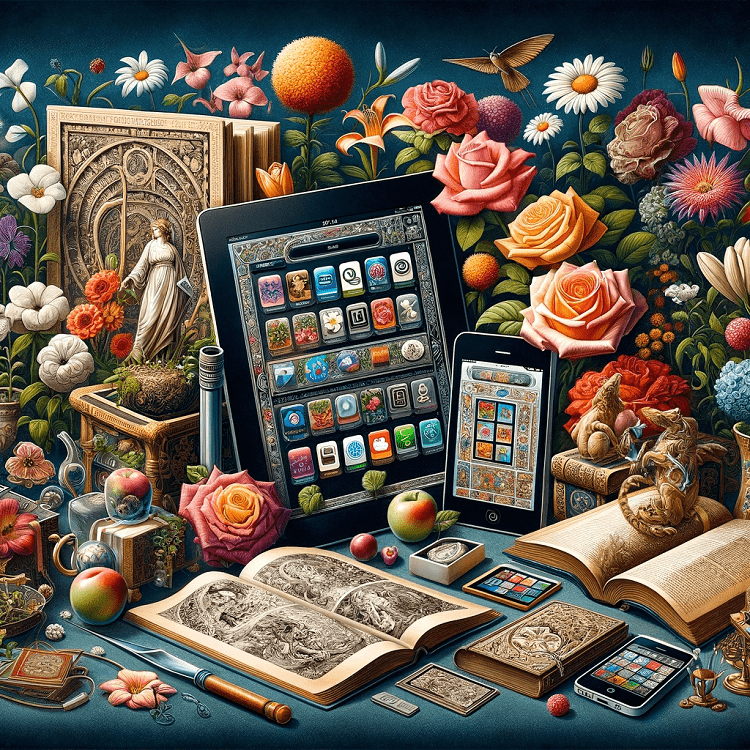
Referencing Historical Meaning in Books and Films
Recent novels and box office hits reference the Victorian language of flowers and ancient superstitions around blossoms. For example:
- Alice Walker’s The Color Purple names characters Violet, Lily, and Shug (short for sugar) nodding to floral personality archetypes
- Baz Luhrmann’s Moulin Rouge musical incorporates the Daisy motif from F. Scott Fitzgerald’s The Great Gatsby via songs
- HBO TV series True Blood repeatedly showed vampires wearing corsages of verbena and silver bark, plants believed in pagan tradition to ward off demons
Such allusions recognize audiences’ continued literary familiarity with traditional floral symbolism.
Flower Emojis as Digital Rebus
The visual language of emojis similarly coopts emblematic flowers, though with simplified meaning more fitting for low-context digital writing. For example:
- The rose emoji overwhelmingly conveys romantic love, especially the red rose variant
- Images of tulips, daisies, and orchids express positive emotions like caring, innocence, and luxury
- The poppy emoji appears on Remembrance Day social media posts memorializing veterans
- The wilted flower emoji signals transient beauty, impermanence and even emotional instability or drama
Thus emoji integrate floral symbolism digitally. They also spread traditional flower meanings rapidly to younger generations.
Celebrity Floristry & New Traditions
New celebrity-driven floral trends also emerge, showing living culture continually evolves to assign new plant meaning.
Recent examples include Kate Middleton’s 2011 royal wedding bouquet sparking the floral name tribute tradition. Brides now request florists incorporate blooms referencing the couple’s history. Gifting blue roses also grew popular after Beyoncé revealed them as her pregnancy announcement to Jay Z.
More Flower Superstitions
To further explore the intriguing world of floral superstitions, Lily's Florist offers a rich array of articles that delve into the mysterious and often overlooked aspects of common flowers. For a deeper understanding of the enigmatic beliefs surrounding roses, violets, and more, our article Unveiling Superstitions of Common Flowers: The Mystery Behind Roses and Violets provides a comprehensive look. Additionally, to gain a broader perspective on how these superstitions can fundamentally alter your perception of flowers, don't miss our insightful piece on Flower Superstitions That Will Change the Way You See Flowers.
Conclusion
The rich history and diversity of floral symbolism across global cultures attests to humanity’s enduring fascination with finding meaning in the ephemeral beauty of blossoms. Beyond mere ornamentation, flowers convey the unspoken hopes, fears, and beliefs that define our shared existence.
Ancient civilizations attributed divine properties to plants, using them in religious rituals, burial rites, and mythology. The Renaissance saw flora take on secular symbolism denoting courtly virtues in art and verse. Victorians developed intricate floral dictionaries defining personality archetypes.
Today pop culture adapts these historic meanings with simplified digital iconography, as rising generations continue applying symbolic perception onto nature’s fleeting gifts.
The persistence of floral motifs and folklore over eras and civilizations points to some universal human needs and values flowers help express, including:
- Reverence for the natural world and changing seasons
- Appreciation for beauty and sensory pleasures
- Contemplation of mortality and impermanence
- Communication of emotions too nuanced for words
- Hope in new beginnings and the regenerative cycles of life
So while notions of romantic love or death change over epochs, humanity’s awe of flowers remains constant. As cultural touchstones, blossoms connect us to what it means to be human while bringing beauty, joy, and symbolic richness to our arts.
